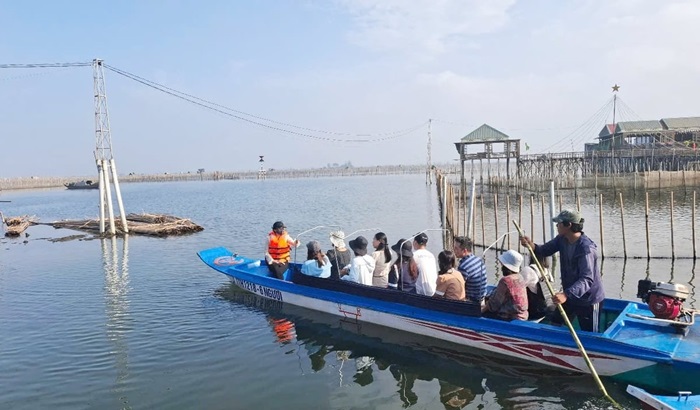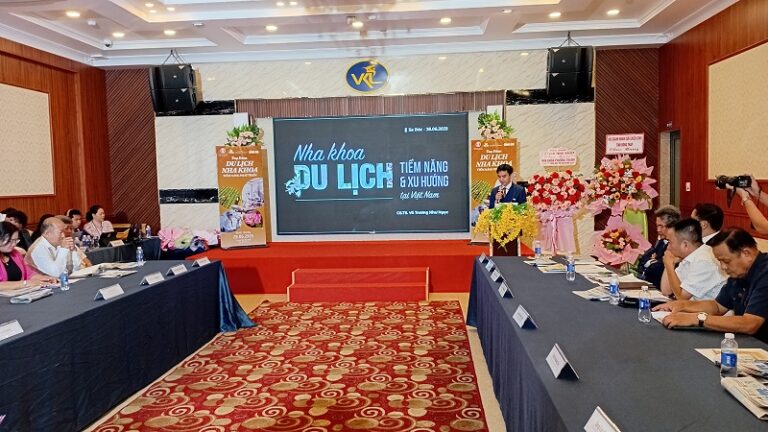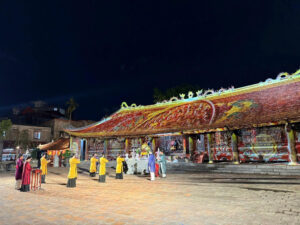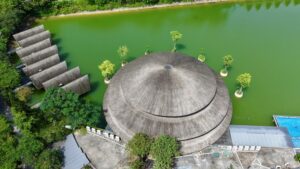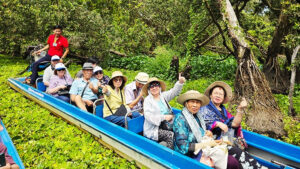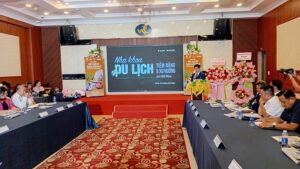The Mekong Delta has abundant ecosystems, with interrelations for all plant and animal species. Humans will only be able to maintain a good life if they do not change the region’s ecosystems.
The Mekong Delta has its biodiversity constituted by three important elements—sunshine, land and water.The region has two seasons, with the sunny season lasting from December until May and the rainy season from June to November. In the rainy season, there are about three months of rain and the time of sunshine lasts roughly two weeks. It is for the sunshine that the Mekong Delta receives enough solar energy all year round.
The land of the Mekong Delta was formed by the seawater rise and the sea retreat thousands of years ago. There are many kinds of land, from fertile land along rivers and rivulets to alum-containing clay in remote, low-lying areas far away from rivers and rivulets. High sand dunes, limestone mountains and peat fields lie scatteringly in many places.
Water of various sources, from the quantity, quality to the time of existence, has immensely determined the diversity of the Mekong Delta’s natural environment. High-terrain areas only have rainwater as water from rivers and rivulets cannot flow to them. Many areas sink underwater by four to five meters in the rainy season. River and rivulet water is considered as freshwater; water of coastal areas is regarded as seawater; and water between areas of freshwater and seawater is brackish water. In addition, the discharge of alum in many lowlands in the sunny season creates alum water in the early rainy season. The time between the coming and going of these sources of water lasts from a few days to a year.
The combination of sunshine, land and water has created typical ecosystems in the Mekong Delta. Some ecosystems cover several thousands of square meters and many others occupy thousands of hectares.
Diverse ecosystems maintain life for tens of thousands of fauna and flora species. Many fauna species migrate to the Mekong Delta to live for a few weeks or a few months while native species live there all the year round. Some species need a certain kind of ecosystem while many species need ecosystems of all kinds. Sarus cranes only go to the Mekong Delta in the sunny season and they only choose ecosystems with c nn kim (scientifically called Eleocharis atropurpurea, a kind of wild weed. On the contrary, cá linh (scientifically called Thynnichthys thynnoides), a species of freshwater fish), come from the Tonle Sap in Cambodia in the rainy season and they need vast flooded areas to feed.
It is perhaps most important that any species play a certain role in any kind of ecosystem available in the Mekong Delta. Some species are the feed for other species, some clean the environment, and some serve as the habitat for other species.
In such inter-dependent relations, human beings are the final link of a chain. That is, humans depend on all other species present in the Mekong Delta. At the low level, they use the shade of trees on a summer day, and at the high level they use species as their daily foods. In other words, humans can live thanks to the biodiversity.
At present, the effort for economic growth tends to decrease the biodiversity. Building a dike to defend a lowland from flooding to get more rice crops causes the loss of the seasonal flooded ecosystem, which results in the vanishment of migrant fish species, including cá linh. Changing conditions of an alum, salinity-infected land to raise tiger shrimps destroys c nn kim, the feed for Sarus cranes, so cranes will not return if this weed no longer grows in the region.
When the biodiversity is lost, present and future generations in the whole society must pay a price for that loss.
Everyone knows that people in the Mekong Delta like eating fish. Previously, the poor caught rasporas and tiny fish while the rich bought gray eel catfish and helicopter catfish. Today, when natural ecosystems have been changed, rasporas and other tiny fish decrease sharply and they become rare and costlier. Therefore, the poor suffer disadvantages first when they can hardly find rasporas and tiny fish, and they do not have enough money to buy gray eel catfish and helicopter catfish because they are too expensive.
As natural fish become scarce, people have to develop the fish farming. However, raised fish cannot match natural fish in terms of quality, so a kilogram of natural fish is always two or three times the price of a kilo of raised fish.
People now find all ways to catch natural fish. Traditional fishing equipment is replaced with modern gears such as electro-shock fishing gear, dynamites and chemicals. These fishing methods destroy all species in the natural environment. The most dangerous thing is that people often use hazardous chemicals to keep the fish fresh to sell for high prices. In aquaculture, to make big profits, farmers use all kinds of feed or growth stimulants to make their fish grow faster and give more flesh.
Of course, harmful chemicals will affect human health as humans are consumers, the last link of a biodiversity chain.
Climate change is changing the weather and people are changing water sources and land. This will cause the Mekong Delta’s natural environment to gradually lose its biodiversity. Therefore, the biodiversity will also be worse and worse. Products of the natural environment will be gradually substituted by artificial products.
But can people replace all products of the natural environment? The question is for those people whose life is connected with the environment and their future in the Mekong Delta.


